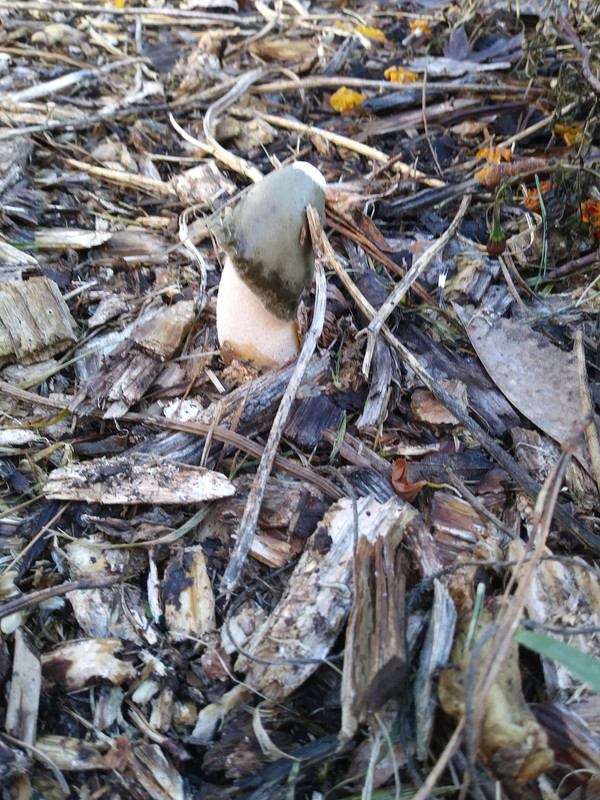Meanwhile, I went down a bit of a 'rabbit hole' this week. My SIL had come over last Sunday to watch the compost pile being filled & as she was walking across the garden to head back home, she said “oh look – you have 'Dead Man's Fingers'” (the 'polite' name). I had noticed one growing when I was clearing out the zinnias several weeks ago, but a bunch more have come up, growing in the wood shavings. They are just around that one zinnia bed, too.
So what are we talking about here? These things …. most have 'collapsed' due to the cold, so they are not the best specimens & past prime, but you can see what is currently in the garden:


I had noticed when working on the zinnias that the top of the large 'finger' had been knocked off and there were a bunch of “Blue Bottle” (ie 'blow') flies on it. I figured it must have smelled like rotting meat to attract those types of flies, thus the “Dead” part of the name.
So I did a little research and here is what I found about the fungi:
From link: Another common name, “common stinkhorn,” refers to the species’ scent rather than its shape; stinkhorns as a group are notable for having spores that are dispersed by flies rather than by wind, and the mushroom recruits flies by mixing its spores in a layer of slime that smells very strongly of rotting animal flesh. The spores and their slime are exuded by the outer surface of the cap, making it appear smooth. Once most of the slime has been removed by flies, the cap surface is revealed to be pitted, very much like a morel—stinkhorns are even referred to as morels in some older sources.
So about those Blue Bottle flies I saw on the fungus …. I ran into a super interesting article about carrot seed growers using Blue Bottle flies to pollinate the carrot flowers – cheaper than honey bees, work harder, and don't sting! Here is the article, that I found:
Managing Alternative Pollinators - The Blue Bottle Fly
If you're interested in general Blue Bottle fly info, there's this:
Calliphora vomitoria
As a general rule, I'd just as soon not have Blue Bottle flies around, but as long as I've got 'stinkhorns' growing, there will be the flies! I'm curious if I'll get stinkhorns next year – they like rotting wood & the wood chips I'm using to keep the grass down around my beds must be at just the right stage for them to grow.